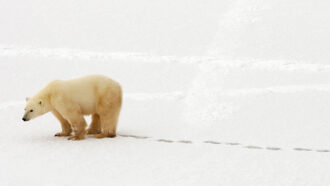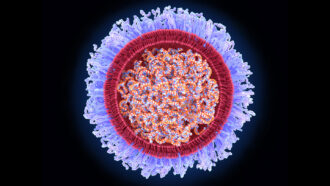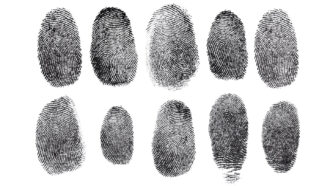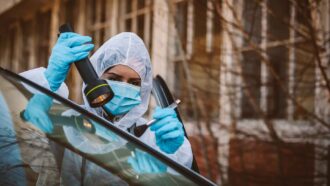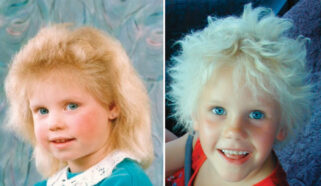Taking attendance with eDNA
Sometimes finding one species is not enough
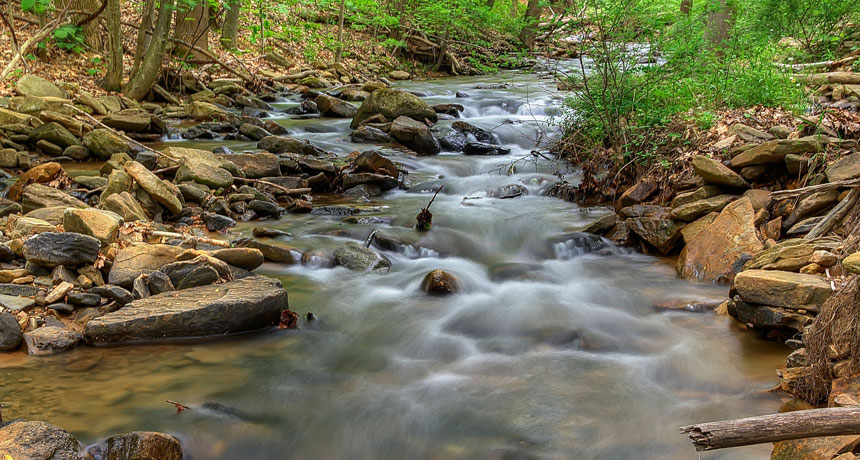
How many fish or other organisms live in this stream? Biologists no longer have to net them or eye them to figure that out. Instead, they just screen for residues of their DNA.
Brook Ward/ Flickr (CC BY-NC 2.0)
Ecologists study the mix of organisms that live together in a habitat. Sometimes they’ll focus on one member of this ecosystem. But “there are many cases where you’d like to look at a whole community [of organisms],” says Michael Pfrender. He’s a geneticist at the University of Notre Dame in South Bend, Ind. But how can you study what you can’t see? This is where environmental DNA — eDNA — can help. This is the DNA shed by organisms into soil, into water or on surfaces.
Scientists might wonder, for instance, about a region’s overall biodiversity. That’s the number and variety of species present. Or biologists might want to know if any species have recently moved into the area. And if they have, scientists might wonder whether this has affected the size of other populations of species living there.
To search for the DNA of multiple species, scientists use a different method than when scouting for just one. They rely on equipment used to perform DNA sequencing. These tools provide a precise identification of a specific patch of DNA. In one day, equipment in Pfrender’s lab can determine the sequences of some 50 million strands of DNA. That adds up to about 15 billion rungs of DNA’s ladder-like molecules!
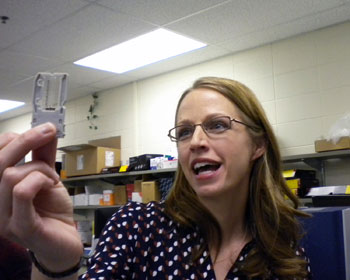
Scientists feed their eDNA sequences into a computer. It now searches through large databases. It’s comparing sequences from the eDNA from a sample to DNA sequences from known species. If they get a match, it will tell them which species had left the eDNA.
Kelly and other scientists at Stanford recently tested this method on a 4.5-million-liter tank at the Monterey Bay Aquarium in California. The researchers already knew what species of fish lived in the tank. And they not only detected the DNA of all the bony fish in it, but also from some long-gone menhaden fish. The aquarium’s handlers had previously fed menhaden to the tank’s residents. The group published its results in PLOS ONE on January 15, 2014.
Now the Monterey Bay Aquarium Research Institute and other groups are working to survey the diversity of species at places off the coasts of California, Alaska and Florida. Remotely piloted underwater vehicles — submarines — could collect some of the samples. With such subs, the project might be able to find species in places that people can’t easily visit, such as deep mid-ocean canyons.
Tests for eDNA can even help discover new species. That happened in a recent project at Weill Cornell Medical College in New York City. Biologist Ebrahim Afshinnekoo and his team collected samples from surfaces throughout the New York City subway system, city parks and a local canal. Of the eDNA they found, 48 percent did not match any known species. Many of the mystery species are probably bacteria and other single-celled microbes that have not been grown in labs before. The group reported its findings in Cell Systems on February 7, 2015.
Power Words
(for more about Power Words, click here)
base pairs (in genetics) Sets of nucleotides that match up with each other on DNA or RNA. For DNA, adenine (A) matches up with thymine (T), and cytosine (C) matches up with guanine (G).
biodiversity (short for biological diversity) The number and variety of species found within a localized geographic region.
database An organized collection of information.
DNA (short for deoxyribonucleic acid) A long, double-stranded and spiral-shaped molecule inside most living cells that carries genetic instructions. In all living things, from plants and animals to microbes, these instructions tell cells which molecules to make.
DNA sequencing The process of determining the exact order of the paired building blocks — called nucleotides — that form each rung of a ladder-like strand of DNA. There are only four nucleotides: adenine, cytosine, guanine and thymine (which are abbreviated A, C, G and T). And adenine always pairs up with thymine; cytosine pairs with guanine.
ecology A branch of biology that deals with the relations of organisms to one another and to their physical surroundings. A scientist who works in this field is called an ecologist.
environmental DNA (eDNA) A tool for detecting the presence of a species solely from the DNA it has left in the environment.
genetic Having to do with chromosomes, DNA and the genes contained within DNA. The field of science dealing with these biological instructions is known as genetics. People who work in this field are geneticists.
genetic sequence A string of DNA bases, or nucleotides, that provide instructions for building molecules in a cell. They are represented by the letters A,C,T and G.
Great Lakes A system of five interconnected lakes — Superior, Michigan, Huron, Erie and Ontario — the Great Lakes constitute the largest freshwater source in the world (based on surface area). They hold an estimated 6 quadrillion gallons of water, or about a fifth of the world’s fresh surface water. To give some perspective on that amount, the lakes’ water would, if spread evenly, cover the 48 touching U.S. states to a depth of about 2.9 meters (9.5 feet) deep.
microbe Short for microorganism, a living thing that is too small to see with the unaided eye, including bacteria, some fungi and many other organisms such as amoebas. Most consist of a single cell.
nucleotides The four chemicals that link up the two strands that make up DNA. They are: A (adenine), T (thymine), C (cytosine) and G (guanine). A links with T, and C links with G, to form DNA.
population A group of individuals from the same species that lives in the same area.
sequencing Technologies that determine the order of nucleotides or letters in a DNA molecule that spell out an organism’s traits.
species A group of similar organisms capable of producing offspring that can survive and reproduce.

